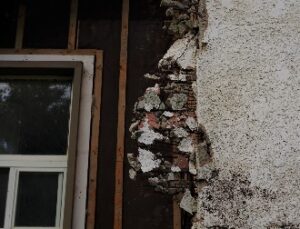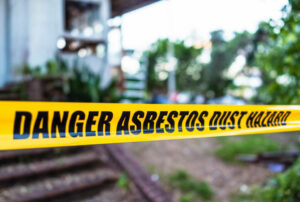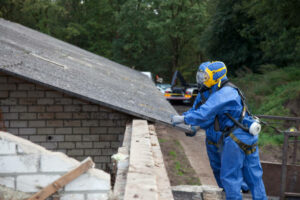The Health and Safety Executive (HSE) has launched a new campaign to keep people safe from asbestos.
 With the ‘Asbestos: Your Duty’ campaign, Britain’s health and safety watchdog is focussing on buildings that people use in their daily lives, including workplaces, schools and hospitals.
With the ‘Asbestos: Your Duty’ campaign, Britain’s health and safety watchdog is focussing on buildings that people use in their daily lives, including workplaces, schools and hospitals.
The campaign aims to improve understanding and awareness of what the legal duties to manage the substance involve and foster “a culture of safely managing asbestos.”
The legal duty covers a wide range of buildings, including museums, schools, hospitals and places of worship, as well as workplace sites like offices and factories.
The HSE wants anyone with responsibilities for buildings to ensure they are complying with the law and preventing exposure to the deadly substance, which was widely used in the construction of buildings until it was banned in Britain in 1999.
Asbestos poses a serious health risk
 Asbestos is not dangerous if it is properly contained, but it poses a serious health risk if it is disturbed or becomes damaged.
Asbestos is not dangerous if it is properly contained, but it poses a serious health risk if it is disturbed or becomes damaged.
Anyone responsible for premises built before the ban must carry out the necessary checks to ensure safety. This is particularly important for any buildings constructed between 1950 and 1980, when the use of asbestos was at its peak.
If asbestos-containing materials (ACMs) in buildings are not properly managed in accordance with national standards and guidance, people who visit or work in these buildings could be exposed to the deadly fibres and may become ill as a result.
Inhaling the fibres can cause cancers such as mesothelioma and lung cancer, but it can take as long as 20-30 years after exposure for symptoms of disease to appear.
Because of this, asbestos exposure remains the single greatest cause of work-related deaths in Great Britain, killing around 5,000 people each year.
We must protect people from asbestos
Inspectors from the HSE will check that asbestos is being managed correctly when they visit relevant sites.
The watchdog has provided updated information about the legal duties to manage the harmful substance on its website. This includes new templates, such as an asbestos management plan template, and explanatory videos.
The HSE’s Chief Executive, Sarah Albon, explained:
“To keep people safe from the harms of asbestos, a culture of safely managing asbestos is needed in our building industry and among those responsible for buildings.
“Asbestos exposure in Great Britain is still thew single greatest cause of work-related deaths due to exposure decades ago.
“Together, we must protect people in the workplace and reduce future work-related ill-health.”
Vital health and safety training
 First Response Training (FRT) is a leading, national training provider.
First Response Training (FRT) is a leading, national training provider.
They deliver over 7,000 courses each year in the fields of health and safety, first aid, fire safety, food safety, mental health, health and social care and other special focus topics.
Their diverse portfolio includes training awards in Asbestos Awareness, Handling Hazardous Substances (COSHH) and Managing and Supervising Risk.
A trainer from FRT explains:
“Exposure to asbestos fibres can be extremely hazardous, with long lasting and devastating consequences.
“It’s vitally important that all people with responsibilities for premises understand the dangers and are aware of the appropriate safety measures they must take to minimise the risks of exposure and protect themselves, their employees, colleagues, clients and members of the public from harm.”
For more information on the training that FRT can provide, please call them today on freephone 0800 310 2300 or send an e-mail to info@firstresponsetraining.com.
